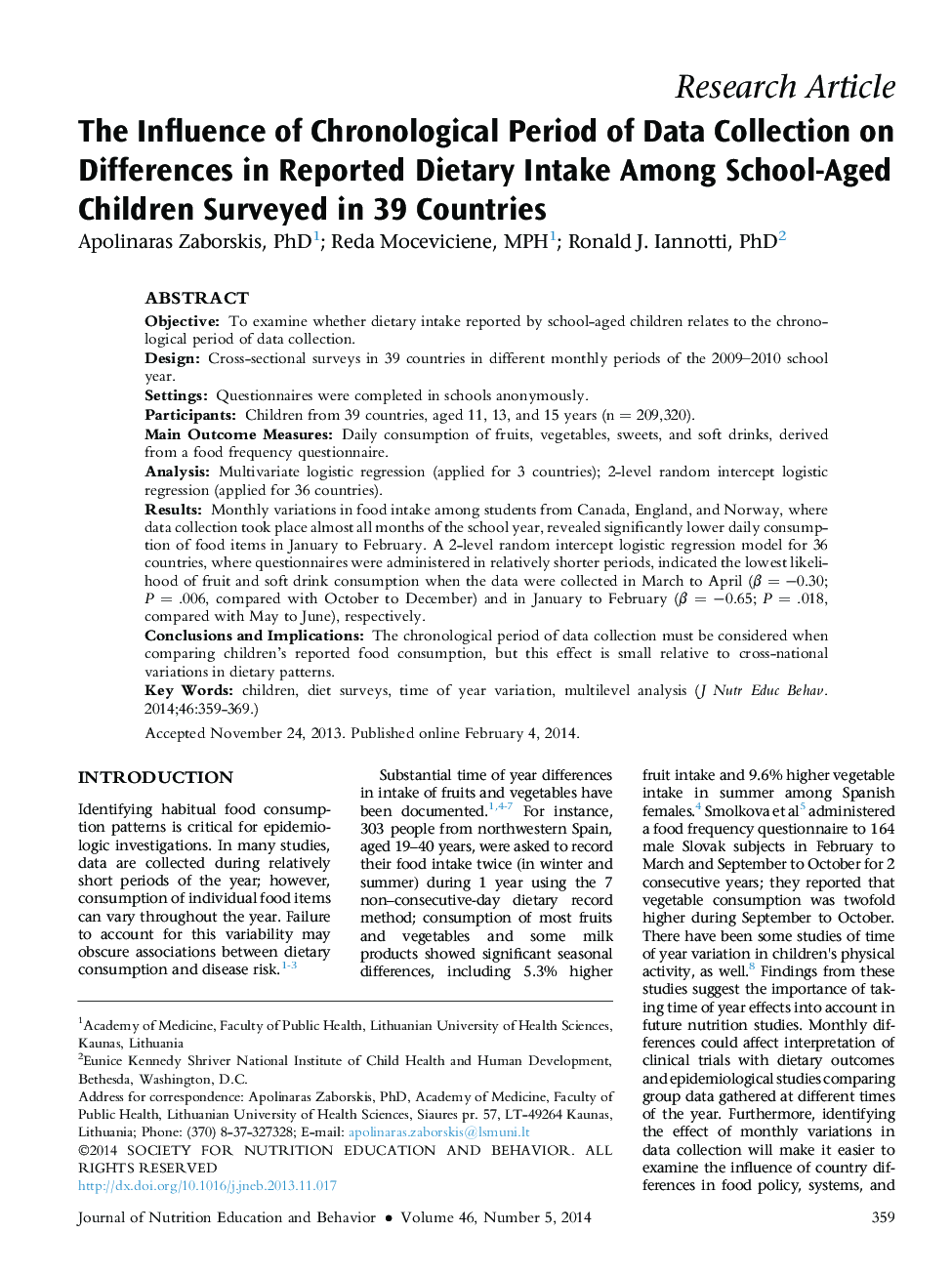| کد مقاله | کد نشریه | سال انتشار | مقاله انگلیسی | نسخه تمام متن |
|---|---|---|---|---|
| 361241 | 620595 | 2014 | 11 صفحه PDF | دانلود رایگان |
ObjectiveTo examine whether dietary intake reported by school-aged children relates to the chronological period of data collection.DesignCross-sectional surveys in 39 countries in different monthly periods of the 2009–2010 school year.SettingsQuestionnaires were completed in schools anonymously.ParticipantsChildren from 39 countries, aged 11, 13, and 15 years (n = 209,320).Main Outcome MeasuresDaily consumption of fruits, vegetables, sweets, and soft drinks, derived from a food frequency questionnaire.AnalysisMultivariate logistic regression (applied for 3 countries); 2-level random intercept logistic regression (applied for 36 countries).ResultsMonthly variations in food intake among students from Canada, England, and Norway, where data collection took place almost all months of the school year, revealed significantly lower daily consumption of food items in January to February. A 2-level random intercept logistic regression model for 36 countries, where questionnaires were administered in relatively shorter periods, indicated the lowest likelihood of fruit and soft drink consumption when the data were collected in March to April (β = −0.30; P = .006, compared with October to December) and in January to February (β = −0.65; P = .018, compared with May to June), respectively.Conclusions and ImplicationsThe chronological period of data collection must be considered when comparing children's reported food consumption, but this effect is small relative to cross-national variations in dietary patterns.
Journal: Journal of Nutrition Education and Behavior - Volume 46, Issue 5, September–October 2014, Pages 359–369
